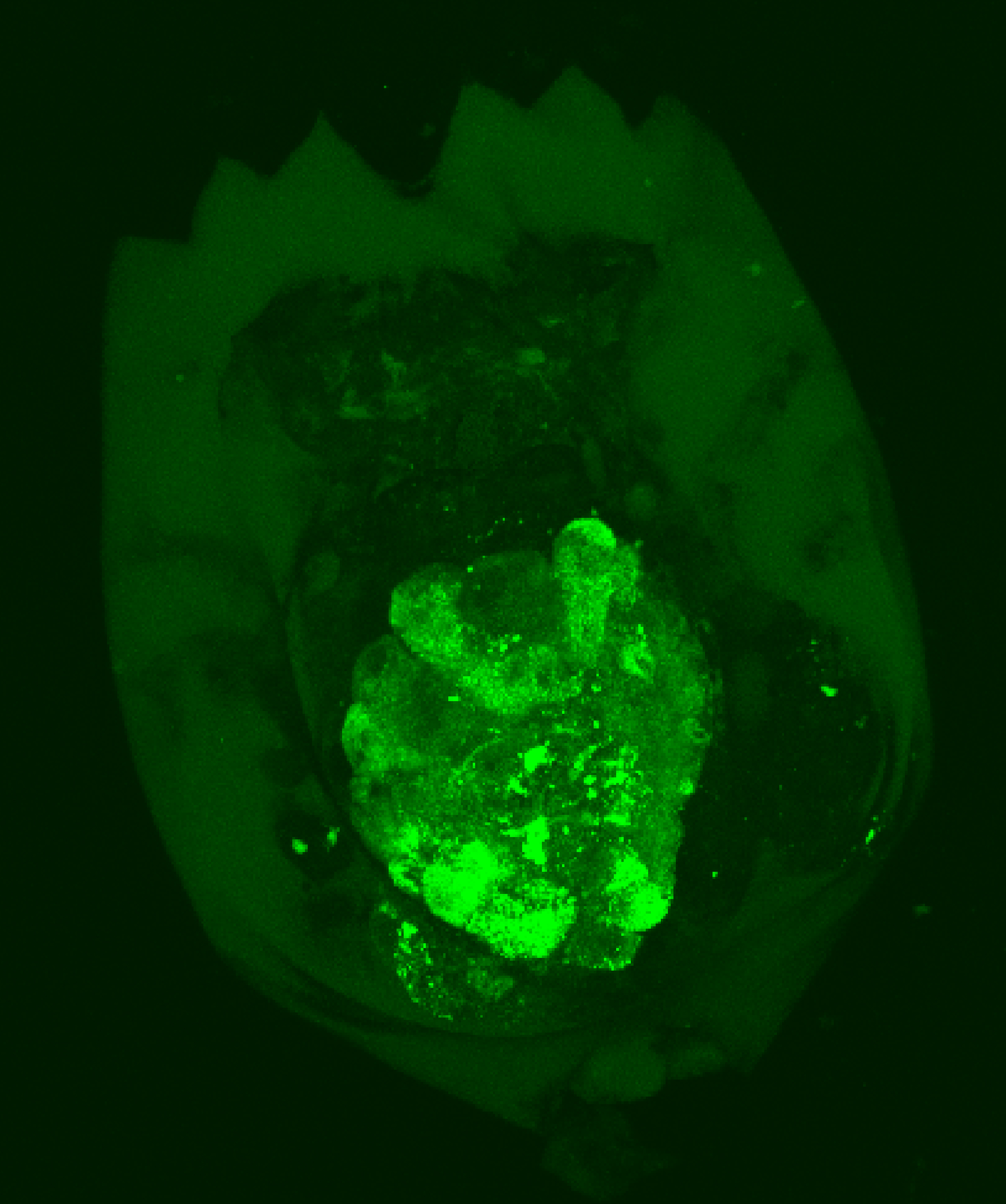About This Project
Rotifers are small (< 1 mm), free-swimming, aquatic animals. Many species eat smaller unicellular algae - particles that are < 10% the thickness of human hair. In aquatic environments tiny particles -- viruses -- exist in great abundance with as many as 1 billion viruses present in each 1 mL of water. Yet, we do not know if or how viruses are consumed by rotifers. In our project we will test whether viruses are delivered to the rotifers' digestive system within the water that they drink.
Ask the Scientists
Join The DiscussionWhat is the context of this research?
Much of what we know about the foods eaten by aquatic invertebrate animals, such as rotifers, comes from studies using food particles (>1 micrometer) that are visible when examined with a light microscope. Yet, tiny viruses (<0.07 micrometer) exist in high concentrations (to 1 billion / mL) in these ecosystems. Could viruses be an "invisible" food source for rotifers?
We already know that many planktonic animals drink by passing water through their digestive system. Within this flow viruses would be carried into areas where their digestion and absorption could occur. If rotifers eat viruses, then they are using an abundant, but previously unrecognized food source, and may also influence aquatic microbial communities by consuming viruses that infect bacteria.
What is the significance of this project?
Understanding the biological role of any species in aquatic ecosystems depends, in part, on knowledge of the full spectrum of foods that are ingested, digested, and ultimately absorbed. Rotifers are small (<1 mm) aquatic animals that actively capture particulate foods >1 micrometer in size. Yet in aquatic environments much smaller particles, viruses, are present in abundances (i.e., 1 billion / mL) that suggest that, if ingested, they too could contribute to the nutrition of rotifers. The observation that rotifers drink water offers a mechanism for the consumption of viruses. Our project will determine the extent to which rotifers, a representative planktonic invertebrate, consume viruses as food and could potentially change our understanding of food webs in aquatic ecosystems.
What are the goals of the project?
We will determine if rotifers use viruses as food. By labeling viruses with fluorescent tags and using different forms of microscopy, we will follow the fate of viruses that are delivered into the digestive system of rotifers within the water they drink. How the distribution of the fluorescent label changes over time will provide insight into how these organic materials are used by rotifers.
Data on ingestion of viruses and their digestion and absorption by cells of the rotifer stomach and intestine will be collected as photographic images. We will use the computer program ImageJ to measure the intensity of the fluorescence in each image. These data will allow us to estimate the abundance of virus present and to describe the potential contribution of viruses to rotifer nutrition.
Budget
The items in the budget consist of materials that support microscopy and imaging, filtering water for experiments and cultures, and culturing of rotifer species.
For the experiments viruses, rotifers, and flow of water through the digestive system of rotifers must be differentiated. The requested fluorescent stains will label the virus (SYBR® Gold, Alexa Fluor® 350), rotifer cells (BODIPY® 558/568 Phalloidin) or will provide a fluorescent marker to monitor rotifer drinking (Texas Red - Dextran). (subtotal = $1337)
To study rotifer feeding on viruses, the abundances of viruses in experimental vials must be known. The requested filtering apparatus and filters are needed to enumerate virus abundance and filter the water used for experiments and for the rotifer cultures. (subtotal = $1171)
The third component of the budget details the materials needed to culture rotifers and their food. (subtotal = $542)
The final monies ($907) will provide a stipend for an undergraduate research student.
Endorsed by
Meet the Team
Will Jaeckle
For the vast majority of my adult life I have been fascinated by small, free-swimming invertebrate animals (both adults and their developmental stages called larvae). These small animals are abundant in aquatic ecosystems, both eat and are eaten, and are phenomenally diverse in their form. Yet, answers to the simplest questions about their biology such as, What do they eat?, How do they eat? are often absent (or incompletely known).
I have had the pleasure to study these amazing animals by collecting them from marine and freshwater environments, from polar to tropical latitudes, and from the surface to hundreds of meters in depth. From every study, I learn something new and I am continually amazed by the many ways that these animals have found to "make their living."
Previous studies have showed that a flow of water passes through the digestive system of many planktonic invertebrates. This flow represents a means to deliver any dissolved organic materials to the site of digestion and absorption within the animal (see the additional information section for examples of rotifer drinking). The proposed project is an extension of these earlier works, as we investigate whether minute, but abundant, viruses enter the digestive system of rotifers within this flow and are ultimately consumed as food.
The “Can aquatic invertebrate animals, like rotifers, consume viruses as food?” research by Dr. Will Jaeckle is a project associated with the Biology Department of Illinois Wesleyan University (Federal Tax ID 37-0662594), an Illinois nonprofit corporation with federal tax exempt status under Section 501 (c)(3). All donations are tax deductible to the fullest extent of the law. 100% of your donation for this project supports research activities.
Note: gifts made through Experiment.com will not be reflected in your Illinois Wesleyan University giving history and will be listed as an anonymous gift in Illinois Wesleyan University’s record system.
Lab Notes
Nothing posted yet.
Additional Information
Here are two different examples of the ability of rotifers to assimilate organic materials contained within the water they drink.
This first pair of images shows a living specimen of Brachionus plicatilis (left image) and a different specimen that was incubated with the iron containing protein ferritin (right image) in seawater. The presence of the iron in ferritin was detected in the stomach of the rotifer using a chemical reaction that converted the iron atoms into an insoluble blue material ("Prussian Blue").

The image below represents the sum of a series of optical sections (collected using confocal microscopy) of a specimen of Brachionus plicatilis incubated in seawater containing sugar molecules linked to a fluorescent label. The distribution and difference in the abundance of the green fluorescence reveals the presence and relative abundance of the molecules within this specimen's body. In this individual, the central stomach is the region of the body where the majority of the label was localized.

Project Backers
- 10Backers
- 8%Funded
- $180Total Donations
- $18.00Average Donation


